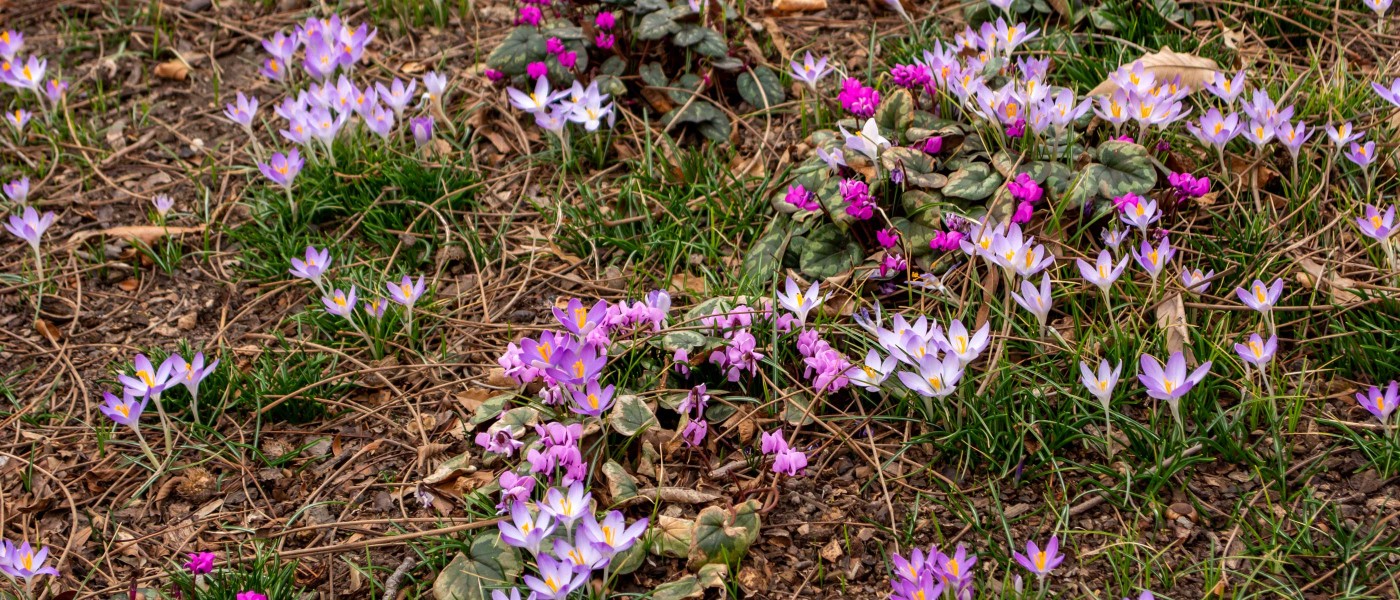An Unusually Warm Winter in Brooklyn
As a warmer-than-usual winter transitions to spring at Brooklyn Botanic Garden, we’ve fielded a few uneasy questions: Did the crocuses bloom early? (A little bit, yes.) What about the snowdrops, is it weird that they’re out? (No, they always bloom in winter.) Is this normal? (Well, not really.)
Temperatures in New York City this winter have been, with some exceptions, noticeably mild. According to NBC New York, January 2023 was the first month to record above-average temperatures every day since record-keeping began in the 19th century. NYC also set a record this winter for the latest in the season measurable snowfall has first appeared, with 0.4 inches finally recorded in Central Park on February 1.
“This is the warmest winter weather I’ve experienced since I became a gardener,” says Jenny Blackwell, curator of the Discovery Garden at Brooklyn Botanic Garden, as we walked near the Flatbush entrance on a 60-something-degree day in February.
The hybrid hellebores Blackwell oversees started blooming, on average, about two months early, while she noticed that dawn arrowwood began blooming a month ahead of schedule. Elsewhere in the Garden, the grass began growing and had to be mowed in February. Warmer winters can also tighten the window for certain tasks, says BBG arborist Jake Nager. To avoid oak wilt, for example, a disease affecting oak trees, the arborists can only prune those trees while they’re dormant in the chilly season; it’s become even trickier to anticipate when trees will break dormancy.
Experts have associated this weather with a combination of complex factors: La Niña (a climate pattern in the Pacific Ocean that can trigger unusual weather around the world) and climate change.
The coastal Northeast is warming faster than other regions of the U.S., notes Allan Frei, a climatologist at Hunter College. And in general, ”it’s expected for our region to continue to warm.” In cities like New York packed with concrete, the urban heat island effect also affects temperatures.
“Most plants in NYC are leafing out and blooming earlier than they were two centuries ago, correlating with warming January through April temperatures,” says Kerissa Fuccillo Battle, who leads the New York Phenology Project, a community science network that tracks the impacts of climate and urbanization on plants and pollinators. Citizen science projects like this can help land managers make informed planting decisions that support a more resilient future.
Some species—for example, red maple, flowering dogwood, spicebush, tulip tree, and common milkweed—appear to be more temperature-sensitive than others, she said.
This year in New York City, she added, skunk cabbage bloomed in January, “some of the earliest dates we’ve seen!”
So what does this mean for plants and ecosystems? Well, we’re still learning.
Changes in temperature and rainfall can cause certain harmful insects to proliferate, and influence the diseases that affect plants. And early flowering can affect ecosystems in a variety of ways.
If flowers emerge too early, a late-season frost might kill them, notes Battle. This can impact the urban pollinator population that depend on those flowers’ nectar, as well as birds and other species who rely on fruit or seeds later in the season.
Red maple—a favored food source for bees—is very sensitive to temperature, says Battle, “and is already flowering to some degree in NYC due to the warm January and February we've had. So too much frost over the next few weeks may reduce an important food source in the urban ecosystem.”


